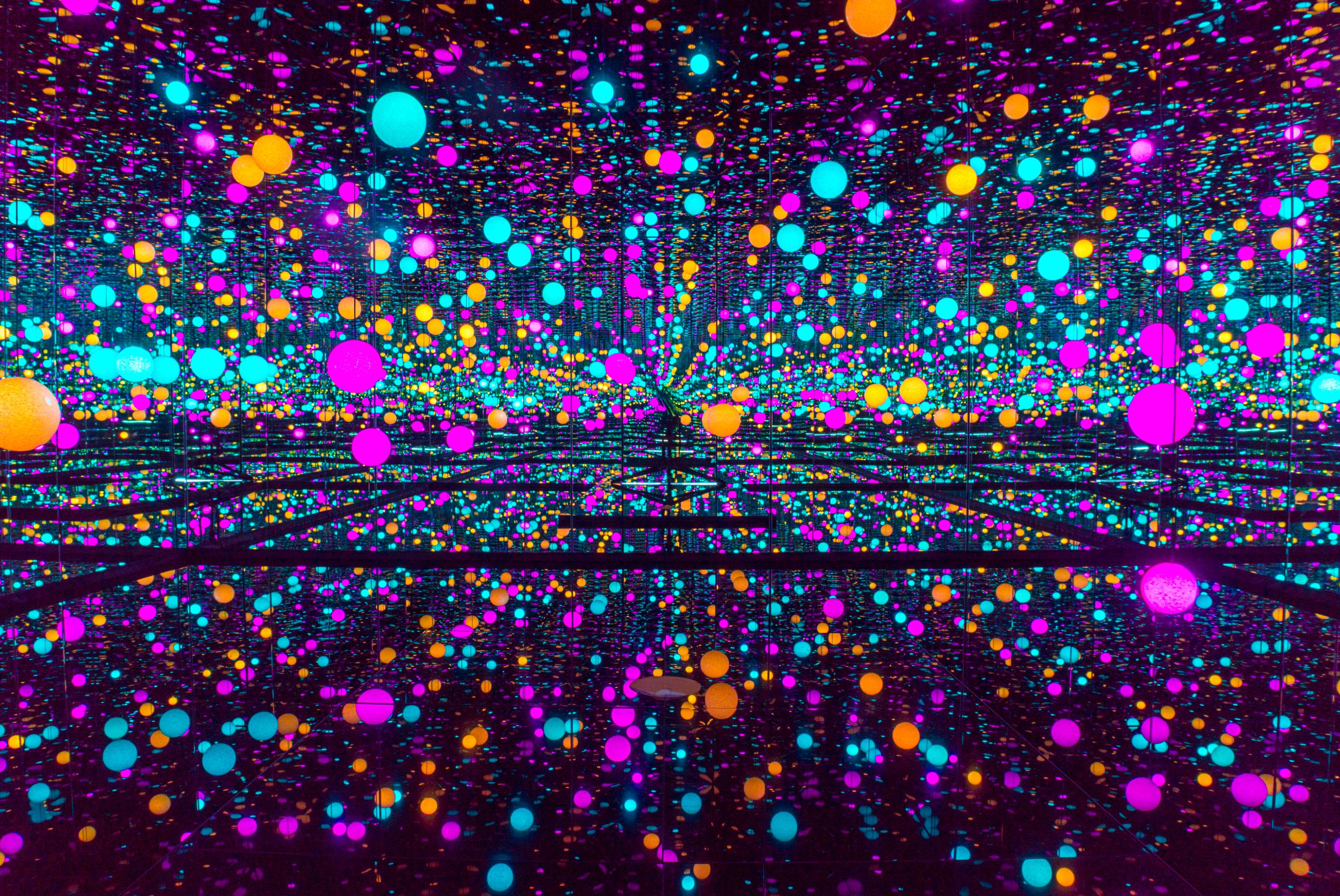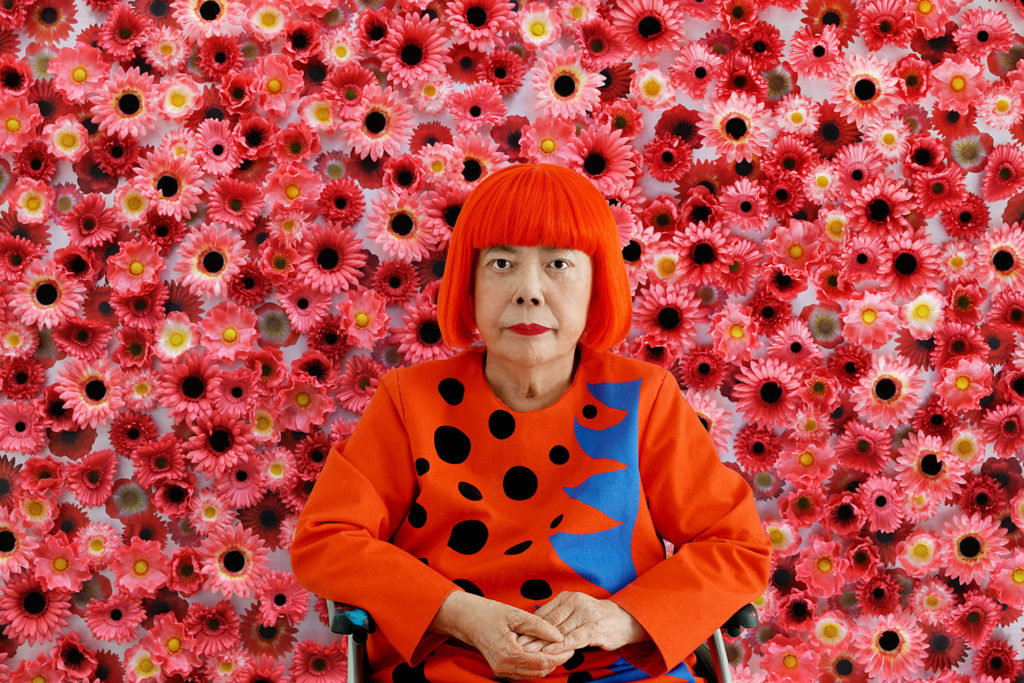You may remember several blogposts back I wrote about Tate Turning 20 and how it was very exciting as Yayoi Kusama was coming to exhibit some of her work. I’ve always been a fan of her work but have never had the time to fully explore her inspiration and career, now I’m in lockdown I haven’t much excuse to find out more about this incredibly interesting artist.
Kusama is acknowledged as one of the most important living artists to come out of Japan, predominately working in sculpture and installation but she’s also completed works in all sorts of genres including film, fashion and poetry.
Where it all began?
 Born in 1929 Kusama was always interested in art and loved painting, her parents however were very against the idea of her being an artist and did not support her artistic journey. It is said that her mother would tear up her paintings in anger, Yayoi Kusama didn’t let this deter her and she would just make more in its place. When she ran out of paint she would use mud in its place. Her dedication and devotion to art worked in her favour and she convinced her parents to let her go to art school to study painting.
Born in 1929 Kusama was always interested in art and loved painting, her parents however were very against the idea of her being an artist and did not support her artistic journey. It is said that her mother would tear up her paintings in anger, Yayoi Kusama didn’t let this deter her and she would just make more in its place. When she ran out of paint she would use mud in its place. Her dedication and devotion to art worked in her favour and she convinced her parents to let her go to art school to study painting.
In the 50s she moved to New York where she met and worked alongside the greats such as Andy Warhol and Donald Judd, being part of the development of pop-art and minimalism. She was an inspiration to many and was one of the first artists to experiment with performance and action art.
There is a common theme throughout her work, which is dots. For this she is sometimes referred and rightly so as the ‘Princess of Dots’. When she moved to New York she was determined to conquer the art world stating:
“I would stand up to t hem all with a single polka dot”
I wanted to know why she featured dots in so many of her works so explored this idea further, and I must admit I was incredibly shocked when I found out the answer.
Why dots?!
When Yayoi Kusama was younger, she said she had a hallucination that left a mark on her. The hallucination was that was in a field of flowers, and they started talking to her (particularly already), and the heads of the flowers looked like dots. For as far as she could see there were dots, giving her the feeling that she was disappearing into these dots; with Kusama describing it as ‘self-obliterating’ into a field full of dots. This bizarre experience influenced much of her later work. The artist stated that by adding these now famous dots all over her work, it makes them melt into and become part of the bigger universe.
Our earth is only one polka dot among a million stars in the cosmos. Polka dots are a way to infinity. When we obliterate nature and our bodies with polka dots, we become part of the unity of our environment
So; you’re intrigued now. You wanna know what self-obliterating feels like, well lucky for you Kusama creates installations full of dots so that you can experience the feeling of self-obliteration.
Yayoi Kusama calls them the ‘Infinity Rooms’ (which are coming to the Tate post lockdown!). They’re created by adding hundreds of flashing lights to a mirrored room. The effect being that the lights are reflecting endlessly around mirrored room, making it appear that you are surrounded and immersed by the dots. For obvious reasons it can’t see this in real life at the moment, but I’d highly recommend you look at the videos of these rooms on YouTube look incredible!
I for one am so excited to be able to experience Yayoi Kusama’s art installations in real life post lockdown and now I know a little more about the meaning behind them it will make it even more of an interesting experience.

